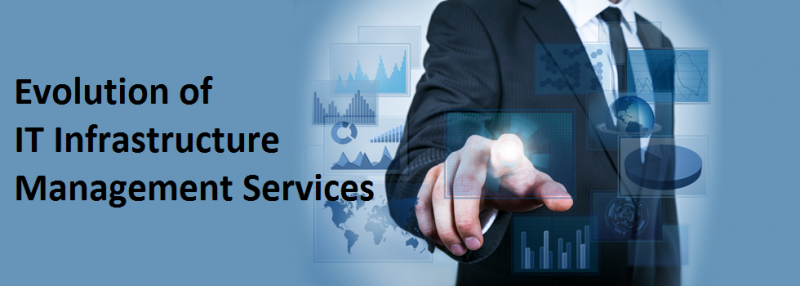In the olden days, the entire infrastructure of an organization was managed by the organization, in its premises itself. However, with the advancement of technology, focusing on supporting multiplying business requirements, this model appeared to be insufficient in terms of the need for accessibility and cost effectiveness.
The advent of the IT Infrastructure Management System in the last few years has changed the whole infrastructure backdrop severely, offering the organizations the knack to leverage on off-premise resources working as a part of their team, therefore, reducing the costs and having improved resources working for them at the same time.
The advancement of end-to-end infrastructure solutions, has ascertained to be a strategic enabler for the CIOs, offering value beyond the apparent cost advantages. The managed infrastructure solutions offer a significantly faster turnaround time, higher availability, and efficiency with dedicated SLA leveraging a Global Delivery Model (GDM) that offers a unique value proposition.
The Evolution of IT Infrastructure Management Services
As per a research by Gartner, around 32% of a CIO’s IT budget is spent on internal resources to monitor and manage his infrastructure. This costs the organization an opportunity to capitalize in the areas of technology that can be important to differentiate the growth and the service.
This theory, combined with the fact that IT was traditionally seen as a support rather than a differentiate department was focused entirely on cost reduction.
The IT managers earlier used to face many challenges like:
• Vague Pricing Models
• Frequent System Failures
• Restricted Productivity
• Lack of Centralization
Eventually times changed and technology came out as a vital part of the strategy to provide better services and staying close to the customer. This was the dawn of the predictive maintenance for IT. Infrastructure Management Services indeed were a savior for the organizations facing such challenges and helped the organizations by:
• Minimizing the system downtime, enabling the secured, continuous revenue streams.
• Centrally managing the property, saving the labor expenses.
• Reducing the help desk costs with significantly fewer calls to recover passwords.
• Reducing the time, effort and costs through automated time consuming tasks.
• Streamlining the device configuration management and provisioning.
• Monitoring all the assets across the network in real time.
The Rise of the Remote Infrastructure Management Services
Over the past decade, the confidence of the organizations in the abilities of Remote Infrastructure Management services has developed steadily. According to IDC, a premier global market intelligence firm, investments in infrastructure management can have a huge impact on the revenue of an organization as more than 85% of the infrastructure components can be managed from remote locations.
Summing Up
Needless to say, IT Infrastructure management services have evolved over the last three decades and today have reached a stage of momentous maturity. Today, IMS provides a wide range of offerings in a variety of business models. From providing IT administrative and networking support to helping clients in strategic planning about outsourcing or setting up data-centers, the infrastructure management services sector today provides significant inputs and services to its clients that impacts their bottom-line directly.
If you have any questions or additional advice relating to the above topic, we’d love to hear from you in the comments below!



